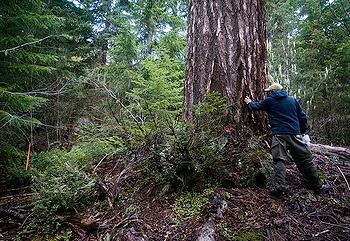
WASHINGTON, DC, September 11, 2012 (ENS) – Two Pacific Northwest conservation organizations are seeking permission from a federal court in Washington to fight a lawsuit that aims to limit the use of science to help manage U.S. national forests.
The Western Environmental Law Center, on behalf of Klamath Siskiyou Wildlands Center and Oregon Wild, filed a motion Monday in U.S. District Court for the District of Columbia asking to intervene on the side of the federal government in a challenge to the 2012 National Forest Management Act Planning Rule, brought by a coalition of industry groups and trade associations.

The timber, livestock and off-road industry groups filed a lawsuit on August 13 against U.S. Secretary of Agriculture Tom Vilsack, who has jurisdiction over the U.S. Forest Service.
They are challenging the new planning rule, which provides for sustainable management of 155 national forests and 20 national grasslands covering some 193 million acres across the country.
In its suit, the industry coalition claims, “Unlawful establishment of “ecological sustainability” as primary purpose of national forest management.”
The industry plaintiffs are: Federal Forest Resource Coalition, American Forest Resource Council, Blue Ribbon Coalition, California Association of 4 Wheel Drive Clubs, Public Lands Council, National Cattlement’s Beef Association, American Sheep Industry Association, Alaska Forest Association, Resource Development Council for Alaska, Inc., Minnesota Forest Industries, Inc., Minnesota Timber Producers Association, California Forestry Association, and the Montana Wood Products Association.
The industry suit relies on the Organic Administration Act of 1897 (OAA) as interpreted by the Supreme Court. This law “directs that national forests are to be ‘as far as practicable controlled and administered’ for only two purposes – to conserve water flows, and to furnish a continuous supply of timber for the American people – and not for aesthetic, environmental, recreational, or wildlife preservation purposes.
Lawyer for the industry plaintiffs, Mark Rutzig, argues that, “As the Supreme Court also found, Congress’ intent in OAA was that the national forests were not to be set aside for non-use.”
The industry suit complains that the Planning Rule “requires unconditionally that for the purpose of achieving ‘ecological sustainability’ all plans must ‘maintain or restore the ecological integrity of terrestrial and aquatic ecosystems and watersheds in the plan area, including plan components to maintain or
restore structure, function, composition, and connectivity ….'”
The industry lawsuit objects to that section of the Planning Rule that states all forest management plans must also “maintain or restore:
(i) Air quality.
(ii) Soils and soil productivity, including guidance to reduce soil erosion and sedimentation.
(iii) Water quality.
(iv) Water resources in the plan area, including lakes, streams, and wetlands; ground water; public water supplies; sole source aquifers; source water protection areas; and other sources of drinking water (including guidance to prevent or mitigate detrimental changes in quantity, quality, and availability),” must “maintain or restore the ecological integrity of riparian areas in the plan area,” and must “establish width(s) for riparian management zones around all lakes, perennial and intermittent streams, and open water wetlands.”
Pete Frost, attorney for the conservation groups, said, “This lawsuit, if successful, could effectively ban conservation biology as a basis to help craft how we manage our national forests. It is a throw-back to when only logging, grazing, and mining mattered.”
The conservationists say they are seeking to intervene in this lawsuit to ensure the use of sound science in decisions affecting the public’s air, water and natural heritage.
“Never before have we seen extraction industries so clearly state that they oppose the use of science on our national forests,” said Joseph Vaile, program director for the Klamath Siskiyou Wildlands Center, based in Oregon.
“Through this suit these groups hope the keys to our national forests are handed over to private industry so they can be turned into private tree-farms for their own benefit,” said Vaile.
Doug Heiken, conservation and restoration coordinator for Oregon Wild, said, “It comes as no surprise that the timber industry would like to see our national forests managed for logging, but it becomes truly bizarre when the timber industry must argue against science and in favor of crony capitalism in order to achieve their desired result.”
The 2012 Planning Rule is the Forest Service’s fourth attempt since 2000 to promulgate National Forest Management Act regulations.
All three previous attempts at rulemaking, in 2000, 2005 and 2008, were defeated in court by environmentalist coalitions led by the Center for Biological Diversity, who argued that the Forest Service had failed to assess the impacts of the rule changes on the environment and endangered species.
The Center, which is not an intervenor in the current lawsuit, says that unlike the Center’s earlier challenges, the industry groups directly challenge the substance of the new rule, including common sense requirements regarding sound science and sustainability.
“The timber and livestock industries’ opposition to science and sustainability shows they care about only one thing when it comes to our national forests: their own profits,” said Taylor McKinnon, public lands campaigns director at the Center for Biological Diversity. “Even as new rules roll back longstanding protections for wildlife, industry keeps complaining about any limits being set on what they can extract from our national forests.”
Copyright Environment News Service (ENS) 2012. All rights reserved.
